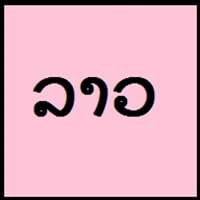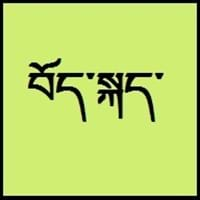Countries
Laos
China, Nepal
National Language
Laos, Northeastern Thailand
Nepal, Tibet
Second Language
Not spoken in any of the countries
Not spoken in any of the countries
Speaking Continents
Asia
Asia
Minority Language
Not spoken in any of the countries
China, India, Nepal
Regulated By
Not Available
Committee for the Standardisation of the Tibetan Language
Interesting Facts
- There is no space left between words, only between phrases or sentences in Lao language.
- The Lao alphabets has been reformed many times over the past 50 years.
- Tibetan dialects vary alot, so it's difficult for tibetans to understand each other if they are not from same area.
- Tibetan is tonal with six tones in all: short low, long low, high falling, low falling, short high, long high.
Similar To
Thai Language
Not Available
Derived From
Pali, Sanskrit and Old Khmer Languages
Not Available
Alphabets in
Lao-Alphabets.jpg#200
Tibetan-Alphabets.jpg#200
Scripts
Thai and Lao Braille
Tibetan alphabet, Tibetan Braille
Writing Direction
Left-To-Right, Horizontal
Left-To-Right, Horizontal
Hello
ສະບາຍດີ (sába̖ai-di̖i)
བཀྲ་ཤིས་བདེ་ལེགས། (tashi delek)
Thank You
ຂອບໃຈ (khàwp ja̖i)
ཐུགས་རྗེ་ཆེ་། (tujay-chay)
How Are You?
ສະບາຍດີບ (sába̖ai-di̖i baw?)
ཁྱེད་རང་སྐུ་གཇུགས་བདེ་པོ་ཡིན་པས།
(kayrang kusu debo yimbay?)
Good Night
ໃນຕອນກາງຄືນ ທີ່ດີ (naitonkangkhun thidi)
གཟིམ་ལཇག་གནང་དགོས་། (sim-jah nahng-go)
Good Evening
ສະບາຍດີຕອນແລງ (sa bai di ton aelng)
དགོང་དྲོ་བདེ་ལེགས།
Good Afternoon
ສະບາຍດີຕອນສວາຍ (sa bai di ton suaai)
ཉིན་གུང་བདེ་ལེགས།
Good Morning
ສະບາຍດີຕອນເຊົ້າ (sa bai di ton sao)
སྔ་དྲོ་བདེ་ལེགས། (nga-to delek)
Please
ກະລຸນາ (kaluna)
thu-je zig / ku-chee.
Sorry
ຂໍອະໄພ (khooaphai)
ཀོང་དགས་། (gawn-da)
Bye
Sôhk dii der
ག་ལེར་ཕེབས་། (kha-leh phe)
I Love You
ຂ້ອຍຮັກເຈົ້າ (khony hak chao)
ང་ཁྱེད་རང་ལ་དགའ་པོ་ཡོད་ (nga kayrâng-la gawpo yö)
Excuse Me
ຂໍໂທດ (kho othd)
དགོངས་དག བཟོད་དུ་གསོལ། ཐུགས་རྗེ་གཟིགས།
Dialect 1
Vientiane Lao
Central Tibetan
Where They Speak
Laos
China, India, Nepal
How Many People Speak
Not Available
Dialect 2
Northern Lao
Khams Tibetan
Where They Speak
Laos
Bhutan, China
How Many People Speak
Not Available
Dialect 3
Central Lao
Amdo Tibetan
Where They Speak
Laos
China
How Many People Speak
Not Available
Speaking Population
Not Available
Not Available
Native Name
ພາສາລາວ (pháasaa láo)
བོད་སྐད་ (pö-gay)
Alternative Names
Eastern Thai, Lào, Lao Kao, Lao Wiang, Lao-Lum, Lao-Noi, Lao-Tai, Laotian, Laotian Tai, Lum Lao, Phou Lao, Rong Kong, Tai Lao
Bhotia, Dbus, Dbusgtsang, Phoke, Tibetan, U, Wei, Weizang, Zang
German Name
Laotisch
Tibetisch
Pronunciation
pʰáːsǎː láːw
Not Available
Ethnicity
Not Available
tibetan people
Language Family
Tai-Kadai Family
Sino-Tibetan Family
Subgroup
Tai
Tibeto-Burman
Branch
Not Available
Not Available
Early Forms
No Early forms
Old Tibetan, Classical Tibetan
Standard Forms
Lao
Standard Tibetan
Signed Forms
Not Available
Tibetan Sign Language
Scope
Individual
Not Available
ISO 639 6
Not Available
Not Available
Glottocode
laoo1244
tibe1272
Linguasphere
No data available
No data Available
Language Type
Living
Not Available
Language Linguistic Typology
Subject-Verb-Object
Not Available
Language Morphological Typology
Isolating
Not Available
Lao and Tibetan Speaking population
Lao and Tibetan speaking population is one of the factors based on which Lao and Tibetan languages can be compared. The total count of Lao and Tibetan Speaking population in percentage is also given. The percentage of people speaking Lao language is Not Available whereas the percentage of people speaking Tibetan language is Not Available. When we compare the speaking population of any two languages we get to know which of two languages is more popular. Find more details about how many people speak Lao and Tibetan on Lao vs Tibetan where you will get native speakers, speaking population in percentage and native names.
Lao and Tibetan Language Codes
Lao and Tibetan language codes are used in those applications where using language names are tedious. Lao and Tibetan Language Codes include all the international language codes, glottocodes and linguasphere.





